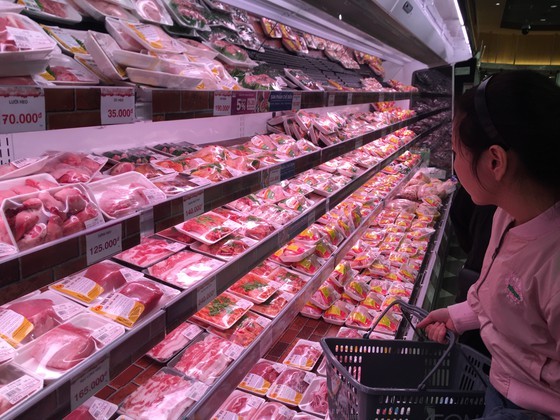
This year, the country is going to import up to 100,000 tons of pork to lower the prices of pork in the domestic market.
According to the MARD, Deputy Minister Phung Duc Tien has recently conducted a physical inspection of imported pork before customs clearance at Hai Phong Port.
This is a move to pave the way for the import of 100,000 tons of pork this year to drag down the prices of pork to the price levels that consumers can accept.
Deputy Minister Phung Duc Tien affirmed that he would create the most favorable conditions for enterprises under the Prime Minister's direction to import 100,000 tons of pork this year. The time of documenting and quarantine procedures for customs clearance is shortened by the ministry according to the "single-door" customs mechanism and the quality of imported meat must meet the European standards.
The ministry also updated that since the beginning of this year, the volume of imported pork from countries including Canada, Brazil, Germany, Poland, the US, and Russia, has reached around 50,000 tons.
Deputy Minister Phung Duc Tien said that up to now Vietnam has allowed 24 countries to export meat and cattle and poultry meat products into the country, of which, 19 countries have been given permission to export pork and pork products.
The average price of pork imported from these countries to Vietnam ports is at around US$2.55 per kilogram or VND60,000 per kilogram of frozen pork, depending on each meat cut. Thus, in comparison with the domestic pork prices, this price level is extremely competitive while the product ensures high technical standards of Europe.
To reach the volume of 100,000 tons of imported pork under the Prime Minister's direction, the MARD has cooperated with relevant ministries to create favorable conditions for importing enterprises to quickly transport pork into Vietnam.
This year, the volume of pork imported from Russia will possibly reach up to 50,000 tons, accounting for 70 percent of total pork imports into Vietnam.
The MARD organizes inspections on the stages of importing meat from Vietnam’s ports to cold stores of enterprises to provide information for consumers about frozen meat in general and imported pork in particular so that consumers can feel secure when using frozen meat products that were processed, packaged and imported at completely reasonable prices.
























